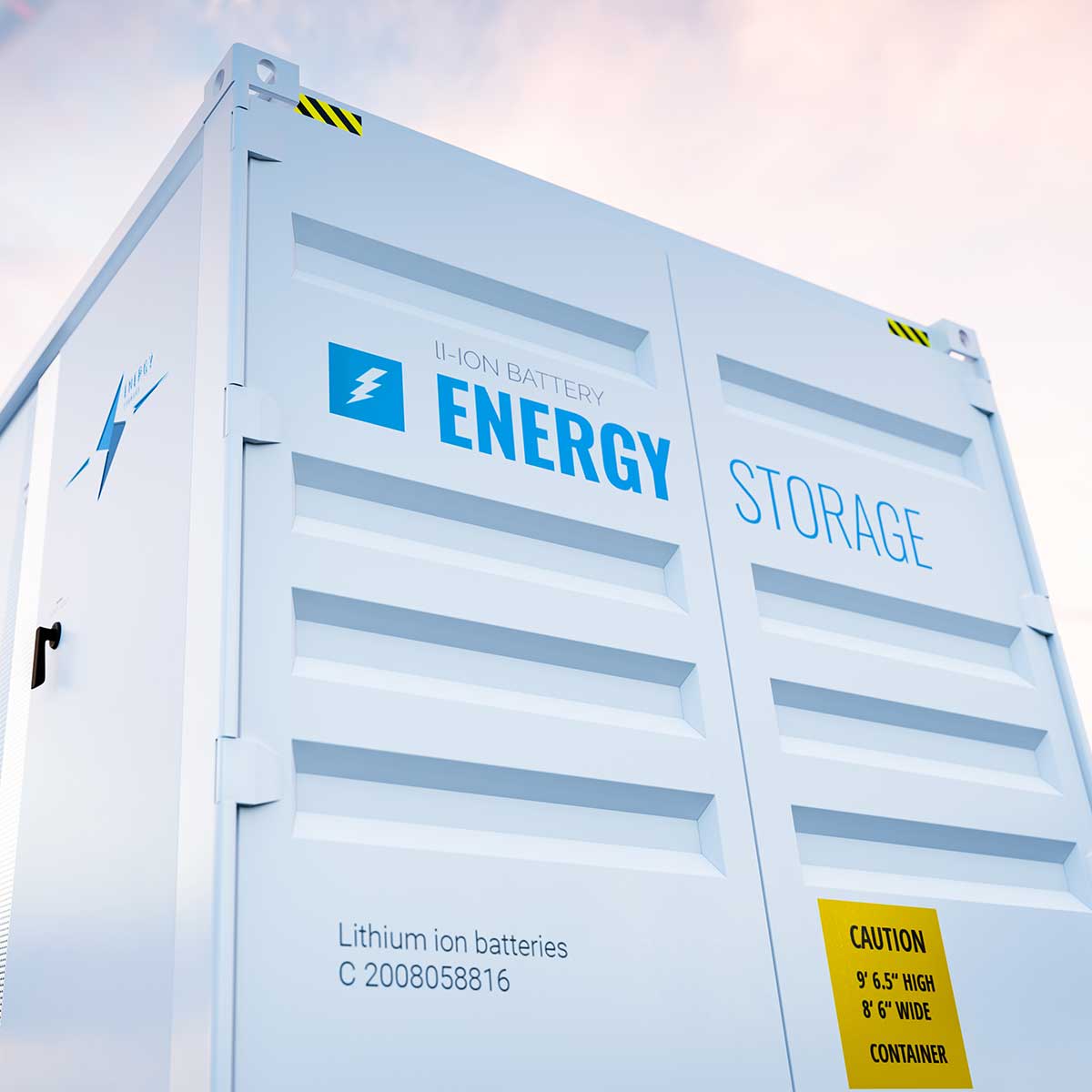Environmental impact of BESS from fire
We take a look at the impact on the environment and key pollution risks associated with Battery Energy Storage Systems (BESS) and how insurance can help

As the use of Lithium-ion batteries grows, incidents in large energy storage systems and large scale cell and battery storage units, leading to fire and sometimes explosion events, is a resilient issue. Here, we take a look at the impact on the environment and key pollution risks associated with Battery Energy Storage Systems (BESS) and how insurance can help to manage the associated liabilities.
How ‘clean’ is renewable?
Although renewable energy is considered to be a ‘clean’ source of energy, it is essential that owners and investors consider how environmental liabilities and pollution risks can attach to Battery Energy Storage Systems (BESS). With fire an accepted risk, it’s important to look at the fall-out from putting out such a fire, in terms of water as an extinguishing agent, gaseous releases and particulate pollutants.
Chemistry of a BESS
A BESS stores chemical energy that can be converted into electrical energy when required, and utilises various types of battery, including lithium-ion, lead-acid or flow batteries. With a lithium-ion battery, the energy storage process involves the movement of lithium ions between positive and negative electrodes. When charging, lithium ions are forced to move from positive to negative electrodes, through an electrolyte solution. When the battery discharges, the process is reversed, with lithium ions moving back to the cathode, releasing stored energy in the form of electricity.
Thermal runway
A specific source of fire in a BESS is thermal runway, which occurs when the temperature inside the battery cell rises uncontrollably, resulting in overheating and ultimately, combustion. This can be triggered by such factors as overcharging, internal short circuits and manufacturing defects.
The chemistry behind a thermal runway is complex, but one of the main contributors is the electrolyte in the batteries, which can break down at high temperatures and release flammable gases. These gases can then ignite, causing a fire, leading to the release of gaseous and particulate pollutants.
Putting out the fire
Water remains one of the most efficient fire extinguishing agents for tackling battery fires, but many thousands of gallons are required. Given the battery’s potentially harmful components and fume emissions (both gas and particles), pollutants can easily disperse or dissolve into the run-off water, causing environmental contamination, and this needs to be carefully assessed.
Types of contamination can include:
- Heavy Metals, such as cobalt, nickel, manganese, aluminium and copper
- Electrolytes and organic solvents that can decompose into fluorine compounds
- Combustion by products and toxic gases, including hydrofluoric, hydrochloric and phosphoric acids
- By-products of burning plastic, such as polycyclic aromatic hydrocarbons, phosphates, phosphorus compounds, dioxins and furans that can enter the environment.
Mitigating water run-off damage
To reduce environmental and health impacts, operators need to consider:
- Containment systems, such as barriers or drainage systems to prevent contaminated water from entering local water bodies
- Fire suppression techniques, best suited to battery fires and reduce run-off contamination
- Emergency Response protocols, whereby first responders are trained in the specific fire risks and potential hazards from run-off water, to help minimise environmental harm.
The role of insurance
BESS has the potential to cause significant harm to the environment, with prevention the best solution. However, the risk of BESS fires is real, especially as assets age, and while insurance can be purchased to manage these risks, it’s essential the correct cover is purchased. Many standard insurance products offering cover against pollution risk are unsuitable, with many insurance brokers unaware of the situation.
Property insurance
In the case of BESS, property insurance/operational all risks insurance should cover the cost of repairing or replacing damaged property, including the BESS itself, and the cost of repairing or rebuilding any structures damaged by the fire, and replacing any equipment or machinery destroyed. It should also cover lost income due to the fire, and the cost of relocating operations while repairs are made.
Public liability insurance
Public Liability should cover third party people and property, although impact caused by fire and more specifically by water run-off is complicated, with a number of key exclusions, including design fault, non-compliance and lack of risk assessment and a narrow band of cover against pollution caused by fire. Harm caused by Battery Energy Storage may not be covered, and there may be limited cover for pollution liability (with exclusions including loss arising from pollution, or cover limited to sudden and accidental events only, which are rarely defined). As the name of the policy is ‘public’, if harm is caused to something not owned by a third party - such as soil beneath the site, groundwater and the environment - the resulting liability would not be covered.
Talk to PIB about Environmental Impairment cover
PIB has both knowledge of and expertise within the area of Battery Energy Storage Systems and can advise on specific environmental impairment liability policies that are designed to provide cover for harm to the environment.
Our policies have the advantage of clarity (providing cover for harm to the environment and third parties), flexibility (including historical pollution liability) and separate limits from standard insurance policies, covering the potentially significant costs associated with such impacts, thereby preventing underinsurance.
To find out more about Environmental Impairment cover and ensure your exposure to such liabilities is covered by appropriate insurance, please contact PIB.
Sources:
1. Article Assessment of Run-Off Waters Resulting from Lithium-Ion Battery Fire-Fighting Operations, published by MDPI (https://www.mdpi.com/2313-0105/10/4/118)
2. BESS Paper: The Environmental Impact of Battery Energy Storage Systems
